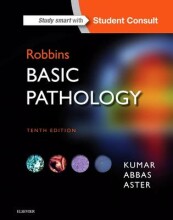Summary: Biochemistry (Math And Modelling)
- This + 400k other summaries
- A unique study and practice tool
- Never study anything twice again
- Get the grades you hope for
- 100% sure, 100% understanding
Read the summary and the most important questions on Biochemistry (math and modelling)
-
Chapter 1: Enzyme kinetics
This is a preview. There are 3 more flashcards available for chapter 03/02/2019
Show more cards here -
What are the requirements for a catalyst?
- Accelerates a chemical reaction
- Does not change the equilibrium
- Enzyme must be reversible
-
What is the three-state transition scheme?
Simplest enzyme model- Product (P)
- Substrate (S)
- Enzyme (E)
-
What are the two crucial assumptions by Briggs and Haldane for the transistion scheme?
- Total amount of enzyme is constant
- The ensemble of enzyme molecules is at steady state
-
What are non-competitive inhibitors?
Bind at a different location to the enzyme than the substrate. Therefore you can not counteract the inhibition by increasing the substrate concentration, so it does not affect the Km. It affects the measured Vmax, this will decrease. -
Chapter 2: The best fitting curve through measurements
This is a preview. There are 1 more flashcards available for chapter 04/02/2019
Show more cards here -
What are the parameters used in our experiment?
Vmax and Km, because you want to know the minimum of the function S(Vmax,Km) -
Chapter 3: Transport
This is a preview. There are 1 more flashcards available for chapter 05/02/2019
Show more cards here -
What is the thermodynamic equilibrium?
The rates of a process and its exact reverse are equally fast on a molecular scale. As a result, on a macro-scale, the net process stands still. -
What is the equilibrium constant?
- Equals the ratio of product and substrate concentrations when the reaction is at thermodynamic equilibrium.
- In a transportprocess the equilibrium is equal to (1) if the process is not linked to a chemical reaction, such as ATP hydrolysis. If the transport process is linked to a chemical reaction, the equilibrium constant of the process (2) equals that of the chemical reaction
- Equals the ratio of product and substrate concentrations when the reaction is at thermodynamic equilibrium.
-
Chapter 4: Redox Reactions
This is a preview. There are 5 more flashcards available for chapter 06/02/2019
Show more cards here -
What is Gibbs free energy?
Gives a value for the maximum labor or useful energy that can be obtained from a chemical reaction or a physical process -
What is the delta G0?
The delta G under standard conditions -
When you look at mass action ratio, onder what condition will the reaction run in forward direction?
gamma/K<1, the closer this ratio is to 0, the further away the reaction is from equilibrium
- Higher grades + faster learning
- Never study anything twice
- 100% sure, 100% understanding
































